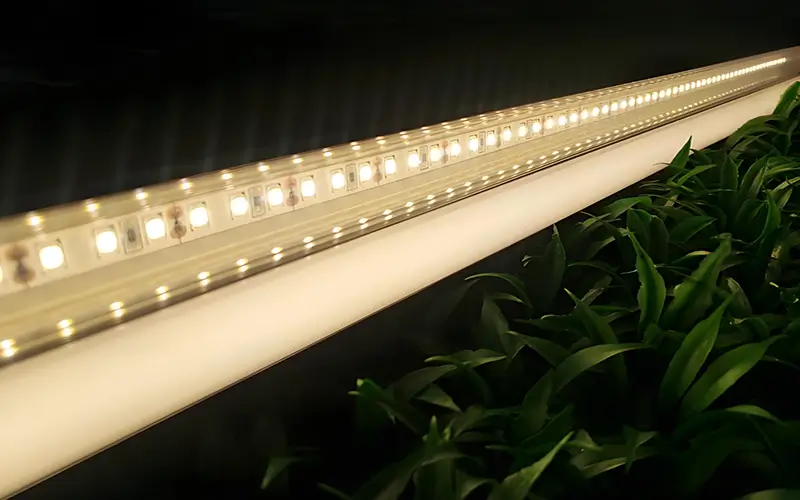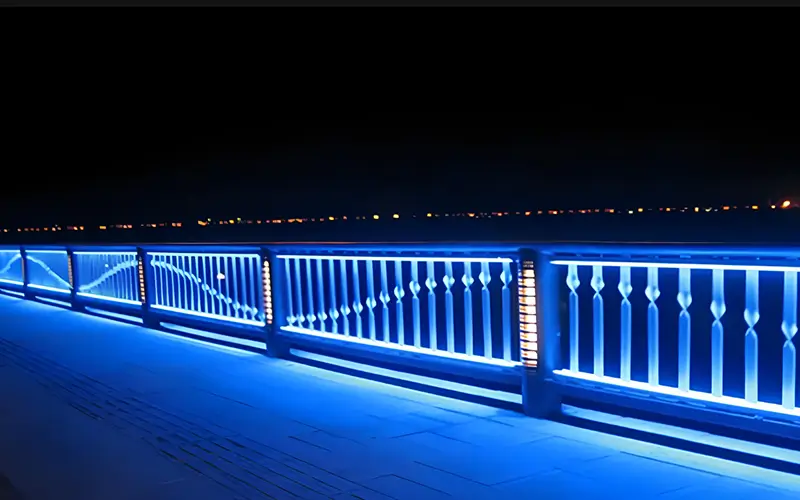
Quando si sceglie una striscia luminosa a LED per la propria striscia luminosa a LED, è necessario comprendere le differenze tra le classificazioni IP. Per le strisce luminose a LED, questa protezione è fondamentale, soprattutto quando le luci vengono montate all'esterno. Le due classificazioni IP più comuni per le strisce luminose a LED sono IP65 e IP67, ma qual è la differenza tra loro? Come si fa a sapere qual è la scelta migliore per le proprie esigenze? Per quanto riguarda l'applicazione delle strisce impermeabili, si prega di leggere 6 modi diversi per illuminare le strisce LED in modo impermeabile
In questo articolo analizzeremo le principali differenze tra le strisce luminose LED IP65 e IP67 per aiutarvi a prendere una decisione consapevole.
Valutazione IP65
Il grado di protezione IP65 significa che questa barra luminosa a LED è resistente ai getti d'acqua a bassa pressione ed è completamente a prova di polvere.
- IP è l'acronimo di "Ingress Protection", uno standard utilizzato per classificare la capacità di tenuta di una guarnizione nei confronti di oggetti estranei, come polvere e acqua.
- Il 6 IP65 rappresenta il massimo livello di protezione contro gli oggetti solidi, compresi polvere e detriti. Ciò significa che la striscia LED non lascia entrare la polvere nell'alloggiamento.
- 5 indica la protezione contro i getti d'acqua provenienti da qualsiasi direzione. Pur essendo in grado di gestire gli spruzzi d'acqua, non è adatto all'immersione.
Le strisce luminose a LED con grado di protezione IP65 sono consigliate per l'installazione in interni. Sono ideali per luoghi in cui possono essere esposte a polvere, sporcizia o occasionali spruzzi d'acqua.
Queste strisce luminose a LED con grado di protezione IP65 sono spesso utilizzate in ambienti semi-esterni, come sotto le grondaie, sulle terrazze e persino nelle cucine e nei bagni, dove i livelli di umidità possono variare.
Valutazione IP67
Il grado di protezione IP67 è un livello di resistenza all'acqua superiore a quello di un prodotto con grado di protezione IP65. Le due cifre di IP67 significano quanto segue:
- Il 6 sta ancora una volta a significare la completa protezione dalla polvere, che protegge dall'ingresso di particelle solide come polvere e sporcizia. Pertanto, una striscia LED IP67 sarà completamente a prova di polvere.
- Il 7 indica che il prodotto può essere utilizzato all'esterno in ambienti umidi. Si consiglia di utilizzare una striscia neon IP68 se deve essere immersa nell'acqua.
Una striscia LED con grado di protezione IP67 è destinata ad ambienti in cui il contatto con l'acqua può essere più diretto. Tra questi, le aree esterne esposte a forti piogge, le piscine o i giochi d'acqua in cui la striscia può essere sommersa per breve tempo.
È importante notare, tuttavia, che il grado IP67 non è progettato per l'immersione continua in acqua, quindi non è adatto per installazioni subacquee come le piscine. Se avete bisogno di una striscia per l'uso in piscine e sott'acqua, abbiamo una striscia al neon specifica per piscine che è Striscia al neon con grado di protezione IP68.
Differenza tra le classificazioni IP65 e IP67
Sebbene entrambe le strisce LED IP65 e IP67 offrano un'eccellente protezione contro la polvere, la differenza principale è la loro resistenza all'acqua:
- IP65: Fornisce principalmente protezione contro i getti e gli spruzzi d'acqua. Non è adatto all'uso in aree in cui può essere immerso per lungo tempo o esposto a forti piogge. Lo consigliamo comunque per l'uso in interni. È molto adatto per aree occasionalmente esposte all'acqua, ma non frequentemente.
- IP67: Offre un'ottima resistenza all'acqua e consente una breve immersione in acqua. È adatto per aree a diretto contatto con l'acqua, ma non si consiglia l'immersione in acqua.
La scelta tra striscia LED IP65 e IP67 dipende in larga misura dall'ambiente in cui la striscia LED verrà installata. Se l'esposizione all'acqua è minima, il grado IP65 può essere sufficiente. Ma se la striscia sarà esposta a umidità o acqua più intensa, il grado IP67 è una scelta più sicura.
Strisce luminose IP65 vs. IP67: Come scegliere?
Abbiamo analizzato in dettaglio le differenze tra le strisce LED IP65 e IP67. Analizziamo quindi come scegliere tra le strisce LED IP65 e IP67 in base alla vostra applicazione specifica.
Esigenze subacquee o di immersione: Né l'IP65 né l'IP67 sono adatti a un uso continuo sott'acqua. Per i progetti che richiedono l'immersione permanente delle luci, ad esempio in una piscina o in un acquario, offriamo strisce al neon con grado di protezione IP68, che sono completamente protette dall'immersione prolungata in acqua.
Uso interno o esterno leggero: Per gli ambienti interni che possono essere occasionalmente esposti all'acqua o al vapore, come cucine o bagni, le strisce con grado di protezione IP65 sono sufficienti. Allo stesso modo, per le installazioni all'aperto sotto terrazze coperte o lungo le gronde, le strisce LED IP65 garantiscono una protezione adeguata.
Esposizione completa all'aperto: Se si prevede di installare la striscia LED in un'area direttamente esposta alla pioggia o in prossimità di uno specchio d'acqua, come una fontana o un laghetto, il grado di protezione IP67 rappresenta una scelta più sicura. Per quanto riguarda la striscia al neon IP67, si prega di leggere L'illuminazione flessibile al neon a LED può essere utilizzata all'aperto?

Conclusione
Nella scelta tra strisce LED IP65 e IP67, valutare l'ambiente di installazione e selezionare il grado di impermeabilità appropriato. Entrambi offrono una protezione affidabile contro polvere e umidità. Il grado IP65 è adatto alle aree umide interne, mentre il grado IP67 è più adatto all'esposizione ad ambienti acquatici più intensi.
Per le opzioni di strisce LED di alta qualità, esplorate la nostra gamma di prodotti su STRISCIA DI NEONLINE. Offriamo soluzioni di alta qualità e di lunga durata per soddisfare le esigenze del vostro progetto. Contattateci oggi stesso per una consulenza personalizzata!
